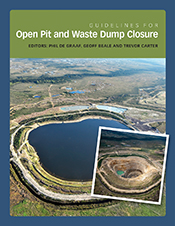Catchment Scale Recharge Modelling - Part 4
This paper addresses the need to model recharge to groundwater systems at the scale of whole catchments.
This paper addresses the need to model recharge to groundwater systems at the scale of whole catchments. It looks at developing the right conceptual model of how water moves through a given landscape for both homogeneous and heterogeneous catchments. One-dimensional recharge models and three-dimensional recharge models are considered. Discussion of which recharge modelling approach to use take in consideration of the availability of data, the nature of the questions being asked, and the expertise of the investigators.
News
No longer available in a print edition.
Contents
- Introduction to Catchment Scale Recharge Modelling
- What's unique about this chapter?
- Why model recharge at the catchment scale?
- Why modelling and not measurement?
- Approaches to Catchment-Scale Recharge Modelling
- Getting the right conceptual model
- Uniform catchment recharge modelling
- Recharge modelling in heterogeneous catchments
- Disaggregation of the catchment into landscape units
- The hydrogeomorphic unit approach
- Distributed parameter recharge modelling
- Recharge estimates for the Loddon and Campaspe catchments
- When are 3-D models necessary for recharge prediction?
- Discussion
- The need for a catchment-scale approach to recharge modelling
- Model complexity
- How to interpret and use recharge modelling output
- Summary
- References








